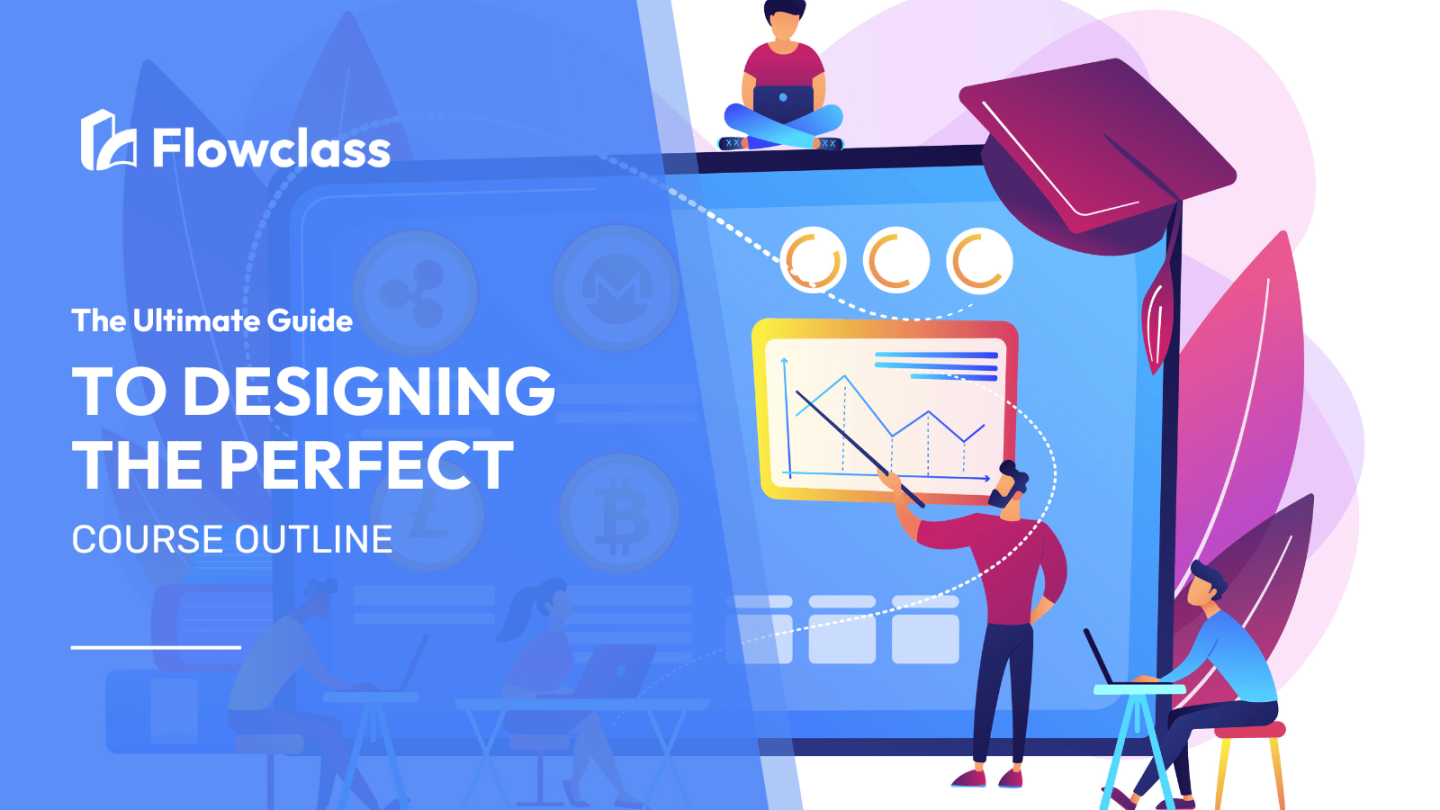Welcome to the ultimate guide on designing the perfect course outline! Whether you’re an educator, instructor, or an e-learning enthusiast, having a well-structured course outline is essential for effective teaching and learning. In this comprehensive guide, we will walk you through the step-by-step process of creating a course outline that engages, educates, and inspires your students.
From determining your learning objectives to organizing your topics and modules, we will explore the key elements that make up a stellar course outline. You’ll discover practical tips on how to balance content, incorporate interactive activities, and sequence your lessons for maximum impact. We will also discuss the importance of assessment strategies and the integration of multimedia resources to enhance the learning experience.
Designing a course outline that captivates your audience and encourages active participation requires a thoughtful approach. This guide will equip you with the knowledge and tools you need to craft a course outline that resonates with your learners, keeping them motivated and inspired throughout their educational journey.
Get ready to take your course development skills to new heights with our ultimate guide to designing the perfect course outline. Let’s get started!
The importance of a well-designed course outline

A well-designed course outline is the foundation for creating an effective and engaging learning experience. It serves as a roadmap that guides both the instructor and the students through the course content, ensuring that the learning objectives are met, and the overall learning experience is streamlined and efficient.
When you invest time and effort into crafting a comprehensive course outline, you are setting yourself up for success. A well-structured outline helps you organize your thoughts, identify the key topics, and plan the sequence of your lessons. This, in turn, allows you to deliver the content in a logical and coherent manner, making it easier for your students to follow along and retain the information.
Moreover, a well-designed course outline can enhance the overall learning experience by providing a clear structure and expectations for the students. When students can see the big picture and understand how the different components of the course fit together, they are more likely to feel motivated, engaged, and invested in the learning process. This can lead to better learning outcomes, increased student satisfaction, and higher completion rates.
Understanding your target audience

Before you start designing your course outline, it’s essential to have a deep understanding of your target audience. Who are the learners you are aiming to reach? What are their learning styles, preferences, and needs? Knowing your audience will help you tailor your course content, teaching methods, and overall approach to ensure maximum engagement and effectiveness.
Consider factors such as the learners’ age, educational background, prior knowledge, and any specific challenges or barriers they may face. This information will inform the level of complexity, the pace of the course, and the types of resources and activities you incorporate. For example, if your target audience is primarily adult learners, you may want to focus on more practical and application-based content, whereas if your audience is younger students, you may need to incorporate more interactive and visually engaging elements.
Additionally, understanding your target audience’s motivations, goals, and pain points can help you design a course outline that resonates with them on a deeper level. By addressing their specific needs and challenges, you can create a learning experience that feels tailored and relevant, ultimately increasing the chances of successful knowledge transfer and skill development.
Identifying learning objectives

Defining clear and measurable learning objectives is a crucial step in designing an effective course outline. Learning objectives are the foundation upon which the entire course is built, as they provide a clear roadmap for what the learners should be able to know, understand, and do by the end of the course.
When crafting your learning objectives, consider the following guidelines:
- Make them specific and measurable: Use action verbs like “identify,” “analyze,” “apply,” or “evaluate” to ensure your objectives can be observed and assessed.
- Align them with your target audience’s needs and interests: Ensure your objectives are relevant and meaningful to your learners.
- Organize them in a logical progression: Start with more basic or foundational objectives and build up to more complex or advanced ones.
- Ensure they are achievable within the given timeframe and resources: Don’t set unrealistic expectations that may frustrate your learners.
By clearly defining your learning objectives, you can then structure your course outline to effectively deliver the necessary content, activities, and assessments to help your students achieve those objectives. This strategic approach ensures that your course is focused, coherent, and tailored to the specific needs of your target audience.
Organizing course content and modules
Once you have a solid understanding of your target audience and have defined your learning objectives, the next step is to organize your course content and modules in a way that enhances the learning experience.
Begin by brainstorming and listing all the topics, concepts, and skills you want to cover in your course. Then, group related items together and arrange them in a logical sequence that builds upon previous knowledge and introduces new information in a manageable way.
Consider breaking your course content into smaller, more digestible modules or units. This modular approach allows you to focus on specific learning objectives within each module, making it easier for your students to absorb and retain the information. When organizing your modules, think about the flow and progression of the content, ensuring that each module builds upon the previous one and leads to the next.
Within each module, you can further structure the content by incorporating a variety of elements, such as:
- Introductory overviews or summaries
- Explanations of key concepts and theories
- Practical examples and case studies
- Interactive activities and exercises
- Opportunities for reflection and application
- Assessments or quizzes to gauge understanding
By carefully organizing your course content and modules, you create a learning experience that is structured, coherent, and engaging, helping your students navigate the material with ease and achieve the desired learning outcomes.
Selecting appropriate teaching methods and resources

Designing an effective course outline goes beyond just organizing the content; it also involves selecting the most appropriate teaching methods and resources to support your learners’ needs and learning objectives.
When choosing your teaching methods, consider a mix of different approaches that cater to various learning styles and preferences. This may include:
- Lectures or presentations to introduce new concepts
- Interactive discussions and group activities to encourage active participation
- Hands-on demonstrations or simulations to provide practical application
- Multimedia resources, such as videos, podcasts, or interactive animations, to enhance visual and auditory learning
- Self-paced learning modules or online resources for independent study
Alongside the teaching methods, carefully curate a selection of high-quality resources that will complement and enrich the learning experience. This may include textbooks, academic articles, industry publications, or multimedia content like videos, podcasts, or educational websites.
When selecting resources, consider factors such as relevance, accuracy, currency, and accessibility. Ensure that the materials you choose align with your learning objectives and are appropriate for your target audience’s level of understanding and engagement.
By incorporating a diverse range of teaching methods and resources, you create a dynamic and engaging learning environment that caters to the diverse needs and preferences of your students. This, in turn, can lead to better knowledge retention, skill development, and overall learning outcomes.
Incorporating assessment and evaluation methods
Designing a comprehensive course outline must also include a well-structured assessment and evaluation plan. Assessments not only help you measure the effectiveness of your teaching and the student’s learning but also provide valuable feedback to guide further improvements and refinements.
When incorporating assessment and evaluation methods into your course outline, consider the following:
- Formative assessments: These are ongoing, low-stakes assessments that provide feedback to both the instructor and the students throughout the learning process. Examples include quizzes, discussions, or in-class activities.
- Summative assessments: These are high-stakes, end-of-module or end-of-course assessments that measure the students’ overall achievement of the learning objectives. Examples include exams, projects, or capstone assignments.
- Authentic assessments: These are assessments that mirror real-world scenarios and challenge students to apply their knowledge and skills in practical, contextual settings.
- Self-assessments and peer-assessments: These empower students to take an active role in their learning by reflecting on their progress and providing feedback to their peers.
Carefully align your assessment methods with your learning objectives and ensure that they provide meaningful and actionable feedback. This will not only help you gauge the effectiveness of your teaching but also enable your students to identify their strengths, weaknesses, and areas for improvement.
By incorporating a balanced and well-designed assessment plan into your course outline, you create a learning environment that is focused on continuous improvement and growth, ultimately leading to better learning outcomes for your students.
Adding interactive and engaging elements

To keep your students motivated, engaged, and actively participating in the learning process, it’s essential to incorporate interactive and engaging elements into your course outline. These elements can take various forms, from hands-on activities and group discussions to multimedia resources and gamification techniques.
When designing interactive and engaging elements, consider the following strategies:
- Incorporate active learning techniques: Encourage students to engage with the content through activities like problem-solving, case studies, or role-playing exercises.
- Utilize multimedia resources: Enhance the learning experience with a variety of multimedia elements, such as videos, animations, or interactive simulations.
- Encourage collaboration and peer-to-peer learning: Foster a sense of community by incorporating group projects, discussions, or peer feedback opportunities.
- Incorporate gamification: Introduce game-like elements, such as points, badges, or leaderboards, to make the learning experience more fun and competitive.
- Provide opportunities for reflection and self-assessment: Give students the chance to reflect on their learning and assess their progress through activities like journaling or self-evaluation quizzes.
By weaving these interactive and engaging elements throughout your course outline, you create a learning environment that is dynamic, immersive, and tailored to the needs and preferences of your students. This, in turn, can lead to increased motivation, better knowledge retention, and more meaningful learning outcomes.
Designing a visually appealing course outline
The visual presentation of your course outline can have a significant impact on the overall learning experience. A well-designed, visually appealing outline not only makes the content more accessible and engaging but also helps to reinforce the structure and organization of the course.
When designing your course outline, consider the following visual elements:
- Layout and structure: Organize the content in a clear and intuitive manner, using headings, subheadings, and bullet points to create a hierarchical structure.
- Typography: Choose a clean, easy-to-read font and ensure that the text is appropriately sized and formatted for optimal readability.
- Color scheme: Select a color palette that is visually appealing and consistent with your brand or the overall aesthetic of the course.
- Visuals and graphics: Incorporate relevant images, icons, or illustrations to break up the text and provide visual cues to support the content.
- Consistent formatting: Maintain a consistent visual style throughout the course outline, using consistent formatting for headings, subheadings, and other elements.
By paying attention to the visual design of your course outline, you create a learning resource that is not only informative but also aesthetically pleasing and engaging. This can help to capture your students’ attention, facilitate better comprehension, and enhance the overall learning experience.
Reviewing and refining the course outline
Designing the perfect course outline is an iterative process that requires ongoing review and refinement. As you develop and implement your course, it’s essential to regularly evaluate the effectiveness of your outline and make any necessary adjustments to ensure that it continues to meet the needs of your students.
When reviewing and refining your course outline, consider the following steps:
- Gather feedback: Solicit feedback from your students, colleagues, or subject matter experts to identify areas for improvement.
- Assess the learning outcomes: Analyze the results of your assessments and evaluations to determine if your students are achieving the intended learning objectives.
- Identify areas for improvement: Look for opportunities to streamline the content, enhance the teaching methods, or incorporate more engaging elements.
- Experiment and iterate: Try out new approaches, techniques, or resources, and monitor the impact on student engagement and learning outcomes.
- Stay up to date: Keep an eye on industry trends, emerging best practices, and new technologies that could enhance your course outline.
By continuously reviewing and refining your course outline, you demonstrate a commitment to excellence and a dedication to providing the best possible learning experience for your students. This iterative approach ensures that your course remains relevant, engaging, and effective, ultimately leading to better learning outcomes and higher student satisfaction.
Conclusion and next steps
Designing the perfect course outline is a critical step in creating an effective and engaging learning experience. By understanding your target audience, identifying clear learning objectives, organizing your course content and modules, and incorporating a variety of teaching methods and interactive elements, you can craft a course outline that captivates your students and helps them achieve their learning goals.
Remember, the process of designing a course outline is an ongoing and iterative one. Regularly review and refine your outline based on feedback, assessment results, and emerging best practices to ensure that your course remains relevant, engaging, and effective.
As you embark on your course design journey, keep these key principles in mind:
- Focus on your learners’ needs and preferences
- Align your content and activities with your learning objectives
- Incorporate a diverse range of teaching methods and resources
- Prioritize interactive and engaging elements
- Pay attention to the visual design and overall aesthetics
- Continuously review, refine, and improve your course outline
By following these guidelines and putting in the time and effort to create a well-designed course outline, you’ll be well on your way to delivering an exceptional learning experience that inspires and empowers your students. Good luck, and happy course designing.
📢 Already have a course outlined? Want to increase student enrolments? Flowclass is your solution!


